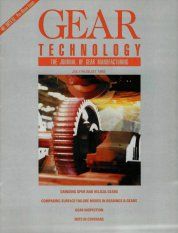In the 1960's and early 1970's, considerable work was done to identify the various modes of damage that ended the lives of rolling element bearings. A simple summary of all the damage modes that could lead to failure is given in Table 1. In bearing applications that have insufficient or improper lubricant, or have contaminants (water, solid particles) or poor sealing, failure, such as excessive wear or vibration or corrosion, may occur, rather than contact fatigue. Usually other components in the overall system besides bearings also suffer. Over the years, builders of transmissions, axles, and gear boxes that comprise such systems have understood the need to improve the operating environment within such units, so that some system life improvements have taken place.
